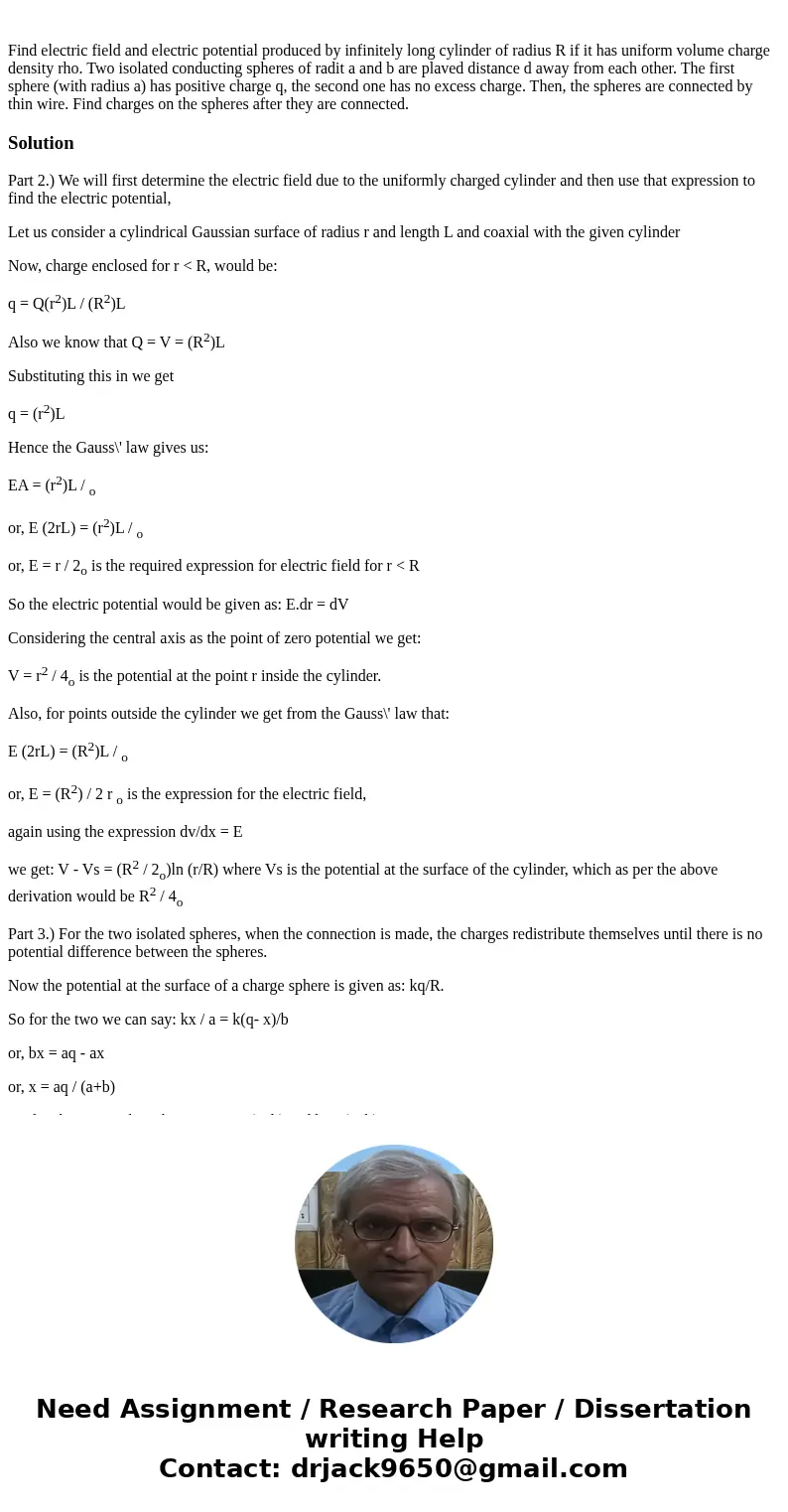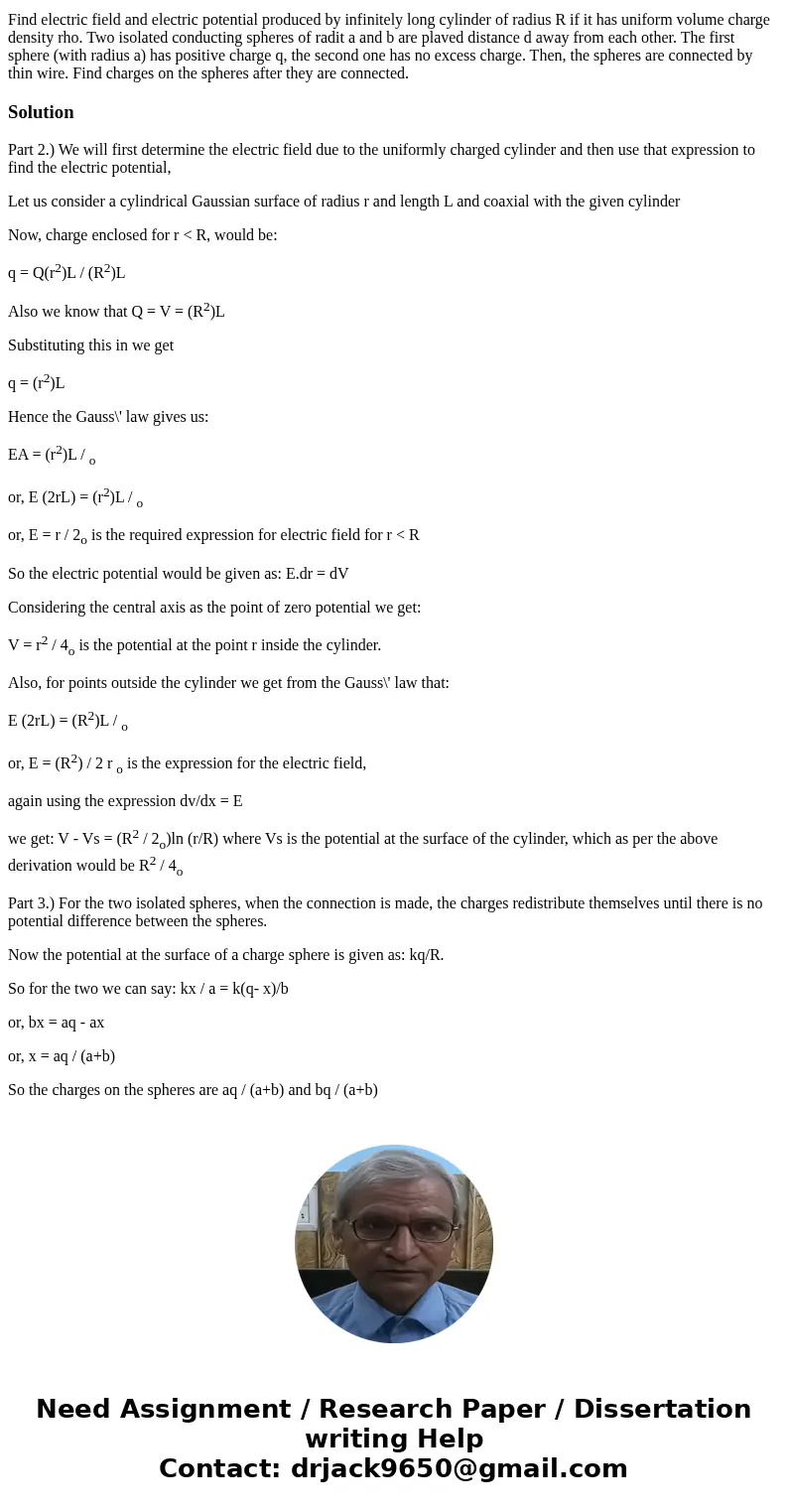Find electric field and electric potential produced by infin
Solution
Part 2.) We will first determine the electric field due to the uniformly charged cylinder and then use that expression to find the electric potential,
Let us consider a cylindrical Gaussian surface of radius r and length L and coaxial with the given cylinder
Now, charge enclosed for r < R, would be:
q = Q(r2)L / (R2)L
Also we know that Q = V = (R2)L
Substituting this in we get
q = (r2)L
Hence the Gauss\' law gives us:
EA = (r2)L / o
or, E (2rL) = (r2)L / o
or, E = r / 2o is the required expression for electric field for r < R
So the electric potential would be given as: E.dr = dV
Considering the central axis as the point of zero potential we get:
V = r2 / 4o is the potential at the point r inside the cylinder.
Also, for points outside the cylinder we get from the Gauss\' law that:
E (2rL) = (R2)L / o
or, E = (R2) / 2 r o is the expression for the electric field,
again using the expression dv/dx = E
we get: V - Vs = (R2 / 2o)ln (r/R) where Vs is the potential at the surface of the cylinder, which as per the above derivation would be R2 / 4o
Part 3.) For the two isolated spheres, when the connection is made, the charges redistribute themselves until there is no potential difference between the spheres.
Now the potential at the surface of a charge sphere is given as: kq/R.
So for the two we can say: kx / a = k(q- x)/b
or, bx = aq - ax
or, x = aq / (a+b)
So the charges on the spheres are aq / (a+b) and bq / (a+b)


 Homework Sourse
Homework Sourse